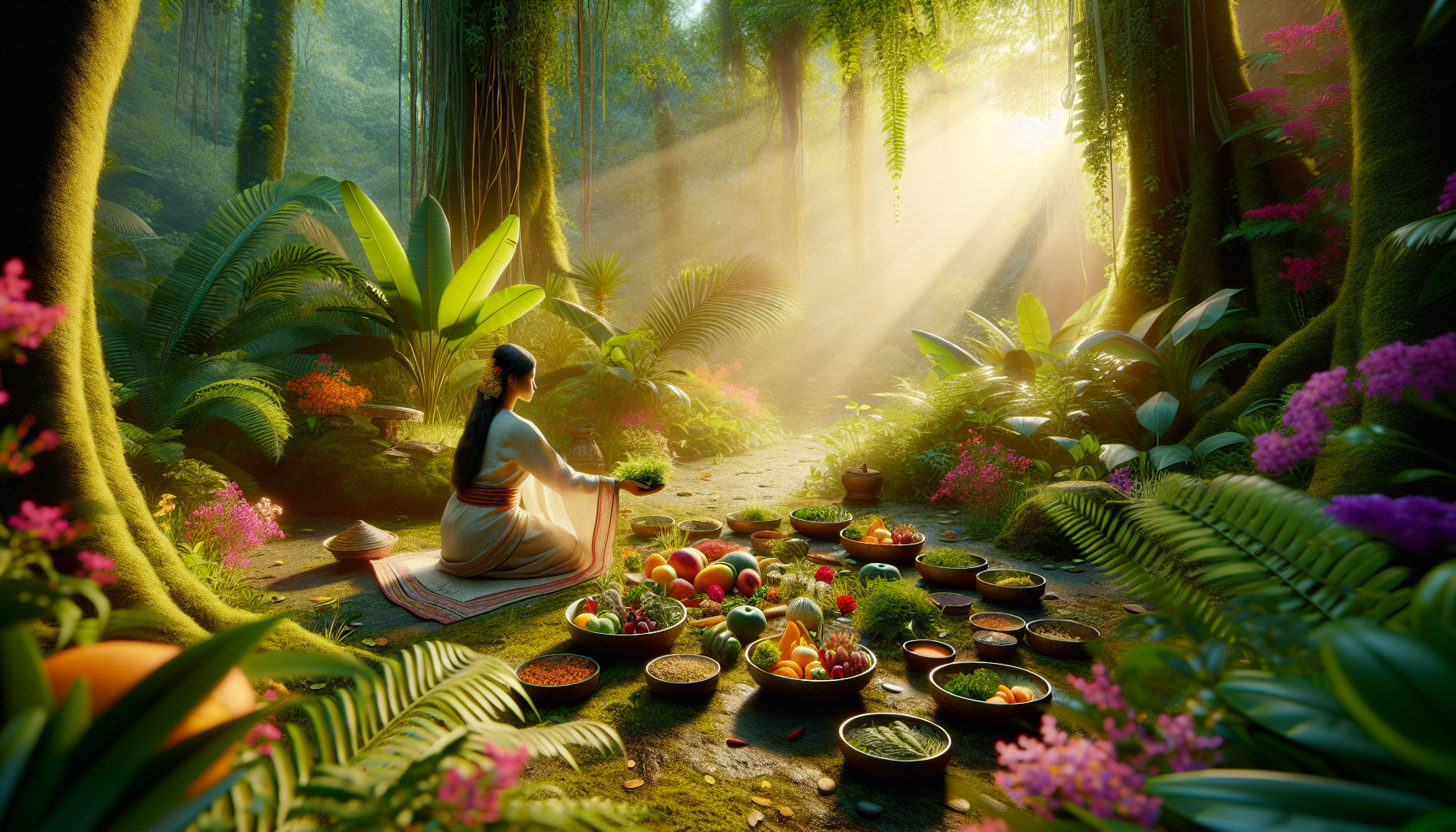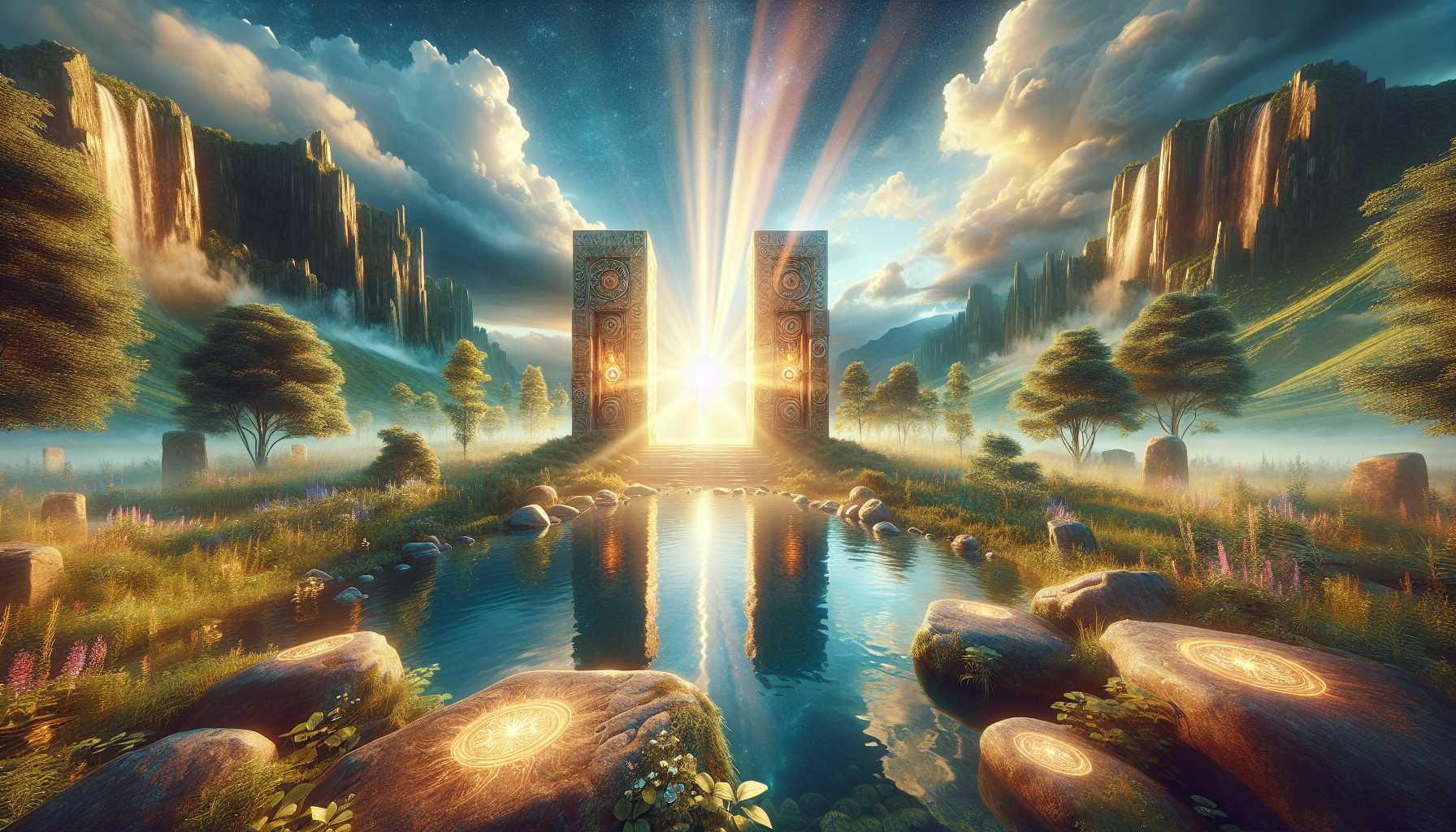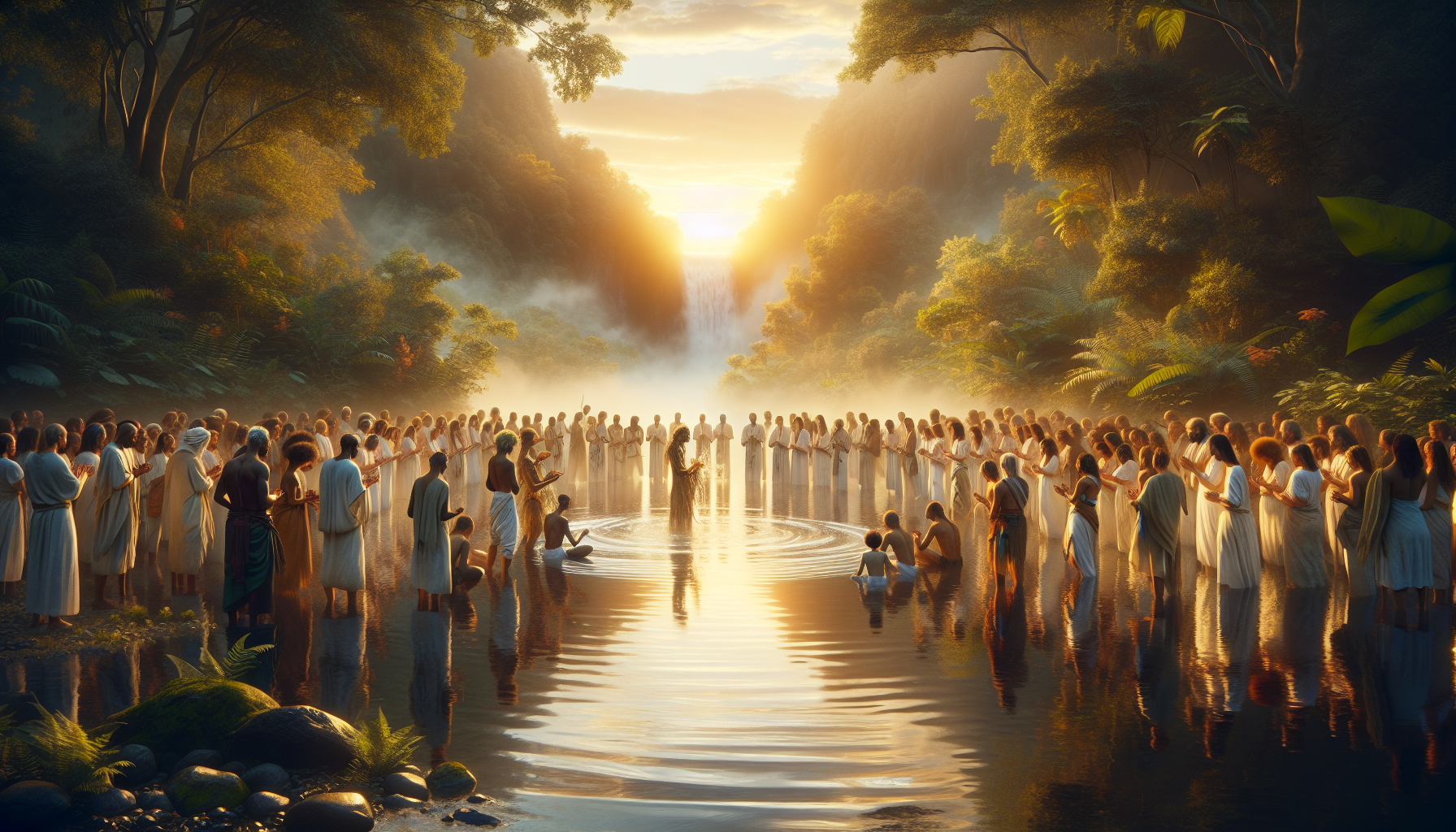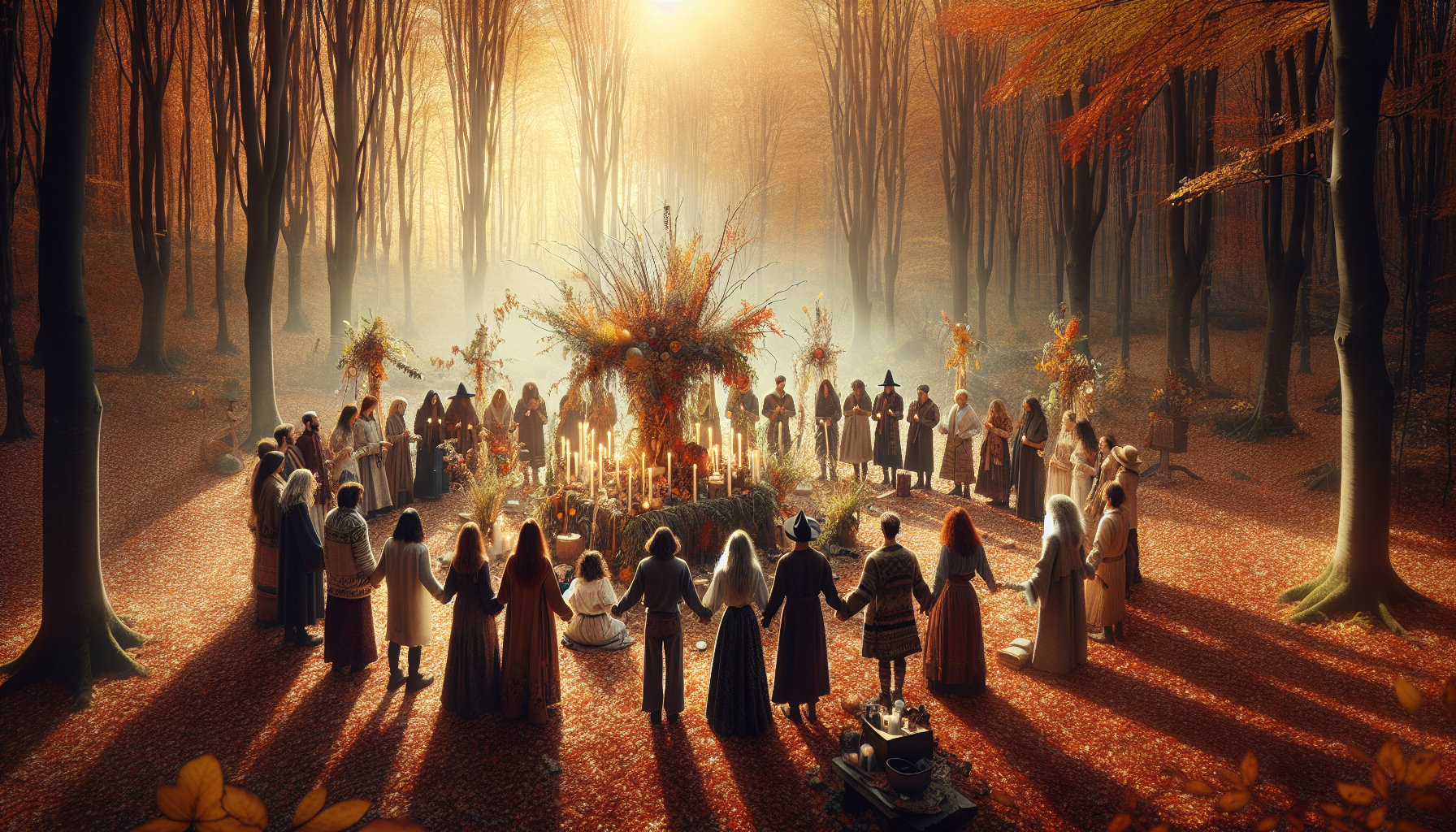In a world where technology often seems to have all the answers, there remains a deep-seated allure in the mystical and the mysterious, the rituals and practices that connect us to the natural world in ways that science has yet to fully understand. Imagine, if you will, a sun-scorched village in need of rain, where hope and tradition converge in a rhythmic, pulsating dance that seeks to summon the clouds and quench the earth’s thirst. This is the intriguing art of rain summoning dances—a practice steeped in history, culture, and a touch of magic. 🌧️
Across continents and through centuries, rain dances have been an evocative expression of humanity’s eternal dance with nature. From the indigenous tribes of North America to the diverse communities of Africa and Asia, each culture has crafted its own unique version of this ritual, embodying their distinct beliefs, rhythms, and movements. But what is it about these dances that captures our imagination and compels us to believe in their power? Could it be the primal connection they forge between humans and the elements, or perhaps the sheer beauty of collective human expression in the face of nature’s unpredictability?
In this comprehensive exploration, we will embark on a journey through time and across the globe to uncover the secrets behind these fascinating dances. We’ll delve into the historical roots of rain summoning rituals, examining how they have evolved and endured through generations. From the intricate footwork and vibrant costumes to the rhythmic drumming and chanting, each element plays a pivotal role in these ceremonies. We’ll also explore the symbolism and significance of these dances within their respective cultures, understanding how they reflect the deep spiritual and communal ties that bind these societies together.
Finally, we’ll ponder the relevance of rain dances in today’s world. As climate change alters weather patterns and water scarcity becomes an ever-pressing issue, could these ancient rituals offer more than just a cultural curiosity? Might they serve as a reminder of our interconnectedness with nature and inspire us to adopt more sustainable practices? Join us as we dance our way into the heart of this captivating tradition, revealing not just the art of rain summoning, but the enduring spirit of humanity’s relationship with the Earth. 💧
Introduction to Rain Summoning Dances
Rain summoning dances have been a part of human culture for centuries, deeply rooted in the rituals and traditions of various indigenous and tribal communities. These dances are not merely for entertainment; they serve a functional purpose and are believed to invoke rain and influence weather patterns. The practice of dancing to summon rain is not just a matter of folklore but a reflection of a community’s relationship with nature and the environment. These dances are often performed during periods of drought or in regions where rainfall is scarce, and the need for rain is urgent for agriculture and sustaining life.
The cultural significance of rain dances varies across different societies, but they commonly share a symbolic connection to fertility, growth, and renewal. In many indigenous cultures, the act of dancing is seen as a form of communication with the divine or spiritual realms, where dancers act as intermediaries between humans and deities or nature spirits. The dance itself is often accompanied by chants, music, and specific attire designed to enhance the ceremonial atmosphere. By exploring these dances, we gain insight into the rich tapestry of cultural expressions that bind humanity to the natural world.
The Cultural Roots and Significance of Rain Dances
The origins of rain summoning dances can be traced back to various indigenous cultures across the globe. In Native American tribes, such as the Hopi and Navajo, rain dances are integral to their spiritual practices. The Hopi, in particular, have a complex calendar of ceremonies, where rain dances are performed to ensure rainfall for their crops. These dances are often accompanied by Kachina dolls, which represent the spirits of rain, fertility, and other natural elements. Each dance movement and costume detail carries a specific meaning, reflecting the community’s cosmology and understanding of the universe.
Similarly, in African cultures, rain dances are prevalent in regions where agriculture heavily depends on seasonal rains. For instance, the Dagara people of Burkina Faso and Ghana perform rain dances during the dry season, seeking the intervention of nature spirits to bring rain. These dances are vibrant and energetic, involving intricate footwork and rhythmic drumming that mimic the sound of rainfall. The community believes that by honoring the spirits through dance, they can maintain a harmonious relationship with the natural world and ensure a bountiful harvest.
The Techniques and Elements of Rain Summoning Dances
Rain summoning dances are characterized by specific techniques and elements that are believed to enhance their effectiveness in invoking rain. These elements often include particular dance movements, musical accompaniment, attire, and rituals. Each component is carefully selected to align with the cultural and spiritual beliefs of the community, creating a powerful and cohesive performance that resonates with both participants and observers.
A fundamental element of rain dances is the use of rhythmic movements that mimic the patterns of rainfall. Dancers often incorporate circular or spiraling motions, symbolizing the cyclical nature of rain and the renewal it brings to the land. These movements are not random; they are choreographed to reflect the community’s understanding of weather patterns and their symbolic meanings. The dance is typically performed in a group, emphasizing unity and collective action in seeking divine intervention.
Rituals and Ceremonies Associated with Rain Dances
Rain summoning dances are often part of larger ceremonies and rituals that encompass various cultural practices and beliefs. These ceremonies may include offerings, prayers, and other symbolic acts designed to appease or communicate with the spirits or deities associated with rain. The rituals surrounding rain dances are deeply embedded in the cultural fabric of the community, often involving elaborate preparations and community participation.
In some cultures, rain dances are preceded by a period of fasting or purification, allowing participants to cleanse themselves physically and spiritually before engaging in the dance. This preparation is believed to enhance the dancer’s connection to the spiritual realm, making the dance more effective in invoking rain. The ritual often includes offerings of food, drink, or other items considered sacred, presented to the spirits or deities as a gesture of respect and gratitude.
The Global Influence and Adaptation of Rain Dances
While rain dances originate from specific cultural contexts, their influence has spread globally, adapting to new environments and cultural exchanges. As societies become more interconnected, the sharing and adaptation of cultural practices, including rain dances, become more prevalent. This globalization of rain dances has led to a fascinating blend of traditional and contemporary elements, enriching the cultural tapestry and offering new ways to engage with the environment.
In urban settings, rain dances have been incorporated into cultural festivals, performances, and educational programs, highlighting their cultural significance and environmental relevance. These modern interpretations often blend traditional movements with contemporary dance styles, music, and theatrical elements, creating a dynamic and engaging performance. By adapting rain dances to new contexts, communities can preserve their cultural heritage while promoting environmental awareness and sustainability.
Contemporary Interpretations and Innovations
In recent years, artists and choreographers have explored innovative ways to interpret and present rain summoning dances, blending traditional elements with contemporary expressions. These creative adaptations often incorporate modern dance techniques, multimedia elements, and diverse musical genres, appealing to a wider audience and inviting new interpretations. By reimagining rain dances, artists can challenge conventional perceptions and explore new meanings and possibilities.
For example, dance companies may collaborate with environmental organizations to create performances that address climate change and water conservation, using rain dances as a thematic foundation. These collaborations can raise awareness and inspire action, demonstrating the relevance of cultural practices in addressing contemporary issues. By engaging with rain dances in new ways, artists and communities can create meaningful dialogue and inspire positive change.
Conclusion
Creating a connection between humanity and nature has always been a profound aspect of many cultural traditions around the world. The art of rain summoning dances, explored throughout this article, embodies this connection by merging spirituality, community, and the physical expression of dance. As we conclude this deep dive into the art of rain summoning dances, let’s recap the essential points discussed, emphasize the significance of this captivating tradition, and inspire you to engage with this cultural practice in your own unique way.
Throughout history, various cultures have developed rain dances as a means of invoking rainfall to nourish their lands. These dances are more than mere performances; they are vibrant rituals steeped in tradition and symbolism. We explored several cultural perspectives, including Native American tribes, African communities, and even modern interpretations, all of which highlight the universal yearning for a harmonious relationship with nature. 🌀
One of the key aspects we examined is the spiritual and communal importance of these dances. In many indigenous cultures, rain dances are not just about calling forth rain but are also about fostering a sense of unity and purpose within the community. Participants in these dances often enter a trance-like state, allowing them to connect with the spiritual realm and express gratitude to the deities believed to govern the elements. This shared experience strengthens community bonds and reinforces cultural identities, especially in regions where agriculture is a central part of life.
Moreover, the physicality of rain dances, characterized by rhythmic movements and the use of traditional music and instruments, serves as a powerful form of expression. The repetitive, energetic motions are designed to mimic the natural forces of rain, wind, and storms, creating a palpable link between the dancers and the environment. This embodiment of natural elements through dance is not only a call for rain but also a celebration of life and renewal. 🌧️
In today’s world, where climate change and environmental degradation pose significant challenges, the lessons from rain summoning dances are more relevant than ever. They remind us of the intrinsic value of respecting and preserving our natural surroundings. By understanding and appreciating these cultural practices, we can foster a greater awareness of our own impact on the environment and the importance of sustainable living.
As you reflect on the themes and insights shared in this article, consider how you might incorporate the principles of rain summoning dances into your own life. Whether through dance, music, or other forms of creative expression, there are countless ways to honor the connection between humanity and the natural world. You might even be inspired to explore the rich tapestry of cultural traditions that emphasize this relationship, broadening your understanding and appreciation of global cultures.
We encourage you to share this article with others who may find value in these insights. Engage in conversations about the importance of cultural preservation and environmental stewardship. Perhaps you’ll even be inspired to learn a rain dance yourself or participate in a local cultural event that celebrates similar traditions. By doing so, you help keep these invaluable traditions alive and relevant for future generations.
For those eager to delve deeper into the history and practice of rain summoning dances, we recommend exploring resources such as Smithsonian’s Folklife Magazine for insights into cultural traditions, and National Geographic for comprehensive articles on indigenous practices and environmental issues.
In conclusion, the art of rain summoning dances serves as a powerful reminder of our interconnectedness with the earth and each other. It encourages us to honor and preserve the cultural practices that have shaped human history and to find inspiration in their teachings. As you dance your way through life, may you carry with you the spirit of these traditions, nurturing both your community and the world around you. 🌿
Thank you for joining us on this journey. We look forward to your thoughts and experiences—feel free to share them in the comments below!
Toni Santos is a visual storyteller and symbolic naturalist whose creations explore the hidden ecologies and forgotten bonds between humans and nature, as whispered through ancient lore. Through an intuitive and myth-sensitive lens, Toni reveals the sacred choreography between flora, fauna, and human spirit — a world where trees once spoke, rivers remembered, and every herb carried a secret name.
His journey is rooted in the esoteric — in the rituals of forest-dwellers, the botanical codes of shamans, and the unspoken pacts that shaped how ancient peoples lived in deep, reciprocal harmony with the natural world. From sacred groves to serpent-guarded springs, each of Toni’s works reflects a symbolic relationship long obscured by modern forgetfulness.
With a background in visual design and ancestral aesthetics, Toni merges storytelling with sacred ecology. His pieces don’t simply illustrate — they channel. Drawing from myth, mysticism, and lost herbal traditions, he crafts visuals that resonate with the old wisdom: that nature is not background, but kin.
As the creative spirit behind Vizovex, Toni shares collections, visual studies, and articles that illuminate the occulted connections between human life and the wild world. His work calls on us to remember — not just with the mind, but with the senses and the soul — the profound dialogues our ancestors once had with earth, plant, and animal.
His work is a tribute to:
The mythic language of trees, stones, and roots
Forgotten pacts between healers and the wilderness
The sacred knowledge carried in nature’s unseen patterns
Whether you’re a seeker of ancient plant-lore, a mystic attuned to seasonal cycles, or simply someone who hears the forest speak, Toni welcomes you to wander a space where symbolism, nature, and spirit entwine — one myth, one leaf, one vision at a time.





